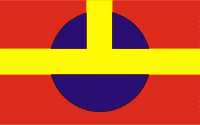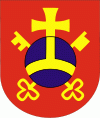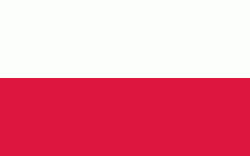Ostrów Wielkopolski (Ostrów Wielkopolski)
 |
 |
Recently, a small fortified dwelling dating from the 10th century was discovered on the north-east side of the town's limits. An archeological excavation is now in progress. It was part of Poland since the establishment of the state in the 10th century.
The oldest known mention of Ostrów comes from a document from 1293. Ostrów received town rights in 1404 but the economic stagnation caused by fires, wars, and a weak 16th-century nobility, led to the town's officials dropping its town status in 1711. Administratively it was located in the Kalisz Voivodeship in the Greater Poland Province of the Polish Crown. In 1714, one of the nobles of Ostrów,, intervened at the royal court, for the status to be reinstated. To help the city grow, new settlers were exempt from taxes for six years. By the power of Grand Crown Marshal Franciszek Bieliński, the town received its status back with greater privileges. Another noble family, the Radziwiłł family took patronage over the town and looked over its many investments. The care of the town's owners, work of its people, and dedication of its officials, as well as its location, favored the town's continuous growth.
During the Second Partition of Poland, in 1793, the town was annexed by Kingdom of Prussia. Back under Polish rule as part of the short-lived Duchy of Warsaw between 1807 and 1815, it was re-annexed by Prussia, to be included within the initially autonomous Grand Duchy of Poznań in 1815. The cloth industry prospered in Ostrów until 1825, when Russia imposed tariffs on imported cloths, as a result of which many textile manufacturers moved east to the Russian Partition of Poland. In 1828 local noble Antoni Radziwiłł funded the construction of a new town hall. In 1845 the Royal Catholic Gymnasium was established, a significant Polish school in the Prussian Partition of Poland, which as the I Liceum Ogólnokształcące remains one of the most renowned high schools in Greater Poland. Ostrów then became an important center of Polish education, press and publishing in the region. Among the local Polish elites were Antoni Bronikowski, an outstanding Hellenist who translated the works of Plato, Homer, Thucydides and Xenophon into Polish, and poet. The establishment of a railroad hub in Ostrów was a vital turning point in its development, helping to lend the town prominent status on the local and national scene. In 1875 the first railway connections were opened, with Poznań and Kluczbork. The Primate of Poland Cardinal Mieczysław Halka-Ledóchowski was imprisoned in the local prison for two years by the Prussians, before they eventually expelled him from the country. After Poland regained independence, he was honored with a monument in the city.
Ostrów was an important center of Polish resistance and national liberation movements. One of the town's historic episodes was the so-called Republic of Ostrów (Republika Ostrowska), which was the citizens’ upheaval of 1918. No blood was shed at that upheaval and all political powers were taken over from the Prussian authorities. The anniversary of the upheaval, November 10, is celebrated as the official Day of the City of Ostrów Wielkopolski. The first Polish mayor of Ostrów after regaining independence was, one of the leading independence activists and publishers in Ostrów before 1918. In the interbellum, Ostrów was one of the fastest growing towns: the number of inhabitants doubled, showy houses were built, as well as new schools, stadiums and a swimming pool. Three new villa district were founded, and a modern railcar manufacturing (Fabryka Wagon) began. In 1934 the city limits were widely expanded and the villages ofWenecja and Krępa became new districts of Ostrów.
Map - Ostrów Wielkopolski (Ostrów Wielkopolski)
Map
Country - Poland
 |
 |
| Flag of Poland | |
Poland has a temperate transitional climate and its territory traverses the Central European Plain, extending from Baltic Sea in the north to Sudeten and Carpathian Mountains in the south. The longest Polish river is the Vistula, and Poland's highest point is Mount Rysy, situated in the Tatra mountain range of the Carpathians. The country is bordered by Lithuania and Russia to the northeast, Belarus and Ukraine to the east, Slovakia and the Czech Republic to the south, and Germany to the west. It also shares maritime boundaries with Denmark and Sweden.
Currency / Language
| ISO | Currency | Symbol | Significant figures |
|---|---|---|---|
| PLN | Polish złoty | zÅ‚ | 2 |
| ISO | Language |
|---|---|
| PL | Polish language |















